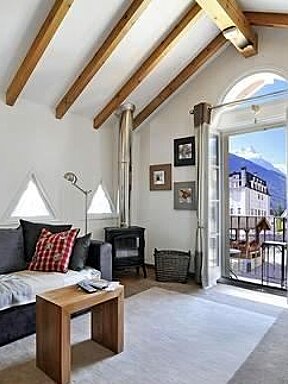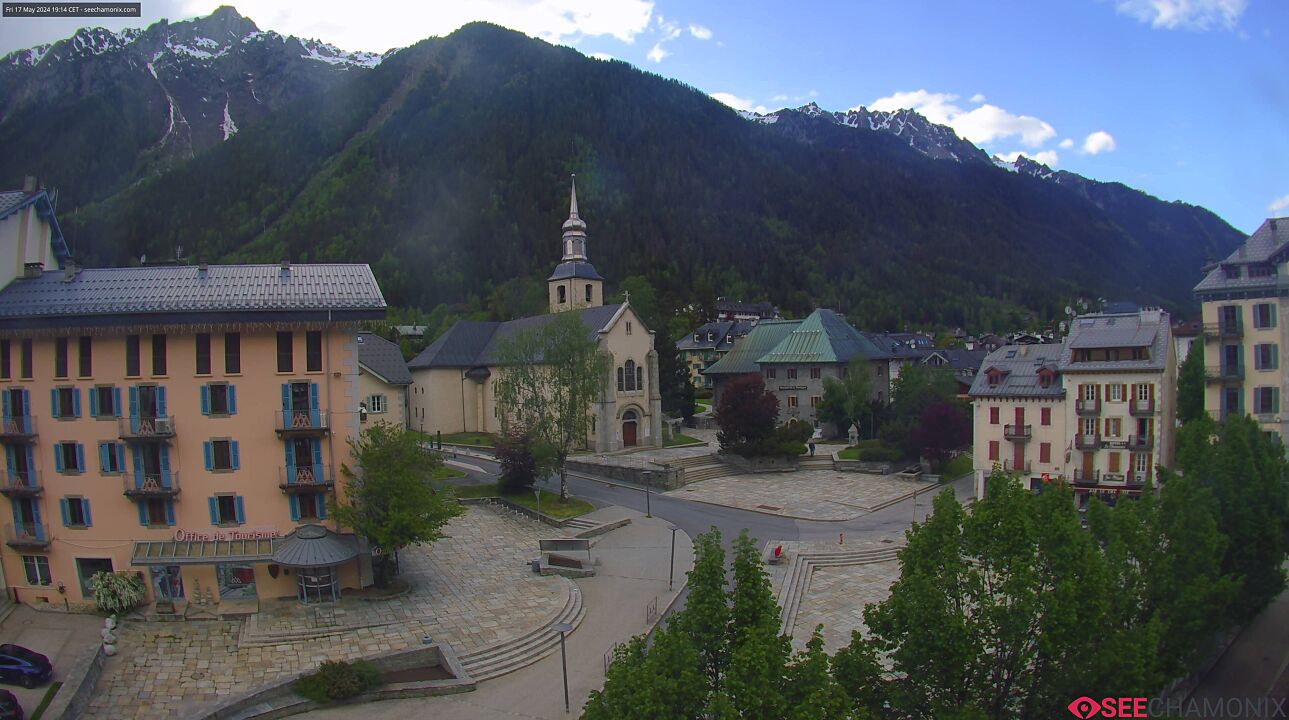Chamonix Activity Report: 2nd August 2006
The period of high pressure seems to have been washed away in last week's stormy weather on Thursday and Friday. But a couple of residual weather fronts circulating around northern France and northern England are providing a fair amount of cloud cover for what looks like the best part of this week. These unfortunately are likely to drop more frequent showers, but with probably less intensity than last week. On the whole temperatures could be 8-10 degrees cooler.
There's still some uncertainty in the air at the moment, the weather isn't completely sure of what its doing and subsequently neither am I. It seems that as a rule in Chamonix if there is something that you want to do of a day here, its best to get up early and get cracking. You are more likely to get the cooler temperatures making any energetic activities more pleasant and also likely to avoid the afternoon storms that close in. (Please don't take this as gospel – Michael Fish was wrong in 1987, so no writing in and complaining of sunburn or lightning strikes on your pre-breakfast stroll please!). This however is not quite such a fun rule for those that work in Chamonix, as at the end of their day with a good three hours of light left till dusk, there seems ample time to go walking, climbing or cycling. So although the oppressive air pressure from last week has disappeared and with it my lethargy, planning my next cycle or walk is pretty difficult as its impossible to tell when there will be the next cloud burst. Another rule relating to this appears to be that whenever I go out on my bike it will inevitably rain – my carbon frame is like a divining rod for water (so if you do see a “skeleton jersey-end” guy on a road bike – run for cover!)
On Friday not trusting my water magnetising bike I decided to take an energetic hike up to the Grand Balcon Nord with a friend from school. John and I started the walk from the Aiguille de Midi cable car station, heading through the tunnel under the main road and into the forest. The path starts upwards quite steeply and I had been warned that the first 20-30 minutes are heavy going. Within minutes I was sweating and wondering if I would lose face if I reached for my water bottle so soon. I knew I was finding the route hard as I could no longer hold a conversation with John who is in training for an ascent of Mont Blanc and clearly more used to the terrain. After a few more steep switchbacks I was relieved to see that John too had a “good bead on”. The route does level out and after around 30 minutes the woodland starts to break up rewarding you with some spectacular views. After an hour and twenty minutes from starting we reached the mid station of the cable car having ascended over 1000 metres. The view is breathtaking from here as you can see all the way from La Tour down the valley to Les Houches. Even better it cost nothing to see it, avoiding the 16 euros price of the cable car. The walk is signposted clearly, and it's suggested that the ascent will take 3 hours, though this would either be at a very sedate pace or possibly the time it takes for a round trip. There are two ways up and down that both start and finish at the same points so if you choose to descend from here you don't have to tread over the same ground.
We decided to continue along the Grand Balcon Nord in the direction of the Mer de Glace. The path undulates gently and is a popular route taken by families and recreational walkers who've taken the cable car up to view the glacier. It is a busy path and can get slightly congested but is well worth the effort. After about 40 minutes you get to a T-junction take the path upwards marked “Signal”, after 15 minutes of climbing you will reach the Signal viewpoint. It's picture postcard stuff up there, grab yourself a patch of grass, open up the picnic, take a well earned rest and enjoy the view over the beautiful Mer de Glace.
For those that ski this area in the winter the glacier marks the legendary Vallee Blanche off-piste run. It is located on the north face of Mont Blanc, it is 7 km long and 200 m deep and 500 metres wide in places, with an area of about 40 sq km. It originates at an elevation of 3,900 m, and descends to 1,400 m. It was once easily visible from Chamonix, but has been shrinking and is now barely visible from below. The glacier moves at an average of 90 meters per year, which is approximately 1cm every hour. Its movement creates some dramatic crevasses and is used as an area for practicing ice climbing. Looking down from the viewpoint at a squint you can just about make out the climbers as a few tiny dots moving around slowly.
The view is spectacular and whilst we were sitting there we saw a huge rock fall in the distance. The power of this demonstrated the ever changing landscape in the mountains and also reminded us of the dangers which we should be constantly aware of. We descended down to the Montenvers railway station, which is a great place if you are walking with tired children to just hop on the train and roll back down to town. Feeling strong we took the path down which follows the same route as the train, it takes about an hour to make it back to the train station in the centre of town, but is nicely shaded and never too steep. By the time we made it back we had been walking for 4 hours and my weary legs felt like they had been on a step machine all that time. So I didn't feel guilty when I treated myself to a scoop of fresh ice cream for each of those hours on my way home through town.
For those who've followed my reports from earlier in the summer you'll know that I'm spending a few months in Chamonix to try and brush up on my French. I have for the last 6 weeks been attending a course at Insted here in Chamonix. My French which pre-arrival here (a C grade in GCSE 12 years ago), I considered to be a little rusty was soon discovered to have corroded away beyond recognition. However after 6 weeks of intense week day mornings my French has been some what galvanised. I could never say that I am anywhere near being fluent, but I am getting to the point of being able to construct and say a sentence without getting a funny look at the end of it. I originally intended to only study here for 6 weeks and then head back to the UK to work before next winter, but as I didn't want to lose this momentum with the course, coupled with an excellent price if you do the maximum 13 week course I've decided to stay (my love of the mountains at the moment may have had a small part in it too). We have just got a new teacher this week, as Insted like to mix it up half way through the course. It's a really good idea as our new teacher Olivier has a totally different style to the last and challenges us in different ways. He adds loads of humour, encouragement and enthusiasm to our group – Imagine the “energiser bunny” after a pint of espresso. His manner of teaching breaks things down into a simplistic style which I think after 7 weeks I'll be able to join together into some good conversational French.
If you are interested in finding out more about Insted go to the Insted website. Not ready to write these reports in French yet, but here's hoping one day.
Enjoy your week.
Piste Maps for Chamonix (pdf format), Les Houches (jpg format), Cross-country skiing (pdf format), and Mountain-bike trails (pdf format)
Current status for opening of Pistes & Lifts
Chamonix Webcam Index
Useful Links
Swiss Federal Institute for Snow and Avalanche Research
French Avalanche Research Institute
Meteo France - Mountain weather and avalanche conditions bulletins (in French)
Henry's Avalanche Talk - popular avalanche training sessions based in French Alps as well as translation of current avalanche conditions
PisteHors.com - Backcountry Skiing and Snowboarding News in English for the French Alps. Excellent coverage of avalanche safety and advice
Additional snow and weather information provided, with thanks, by meteo.chamonix.com and the Tourist Office



























